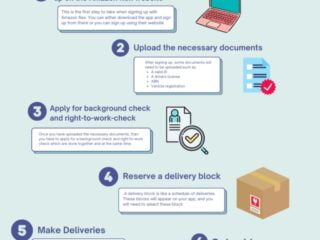Dynamo Db Amazon

Dynamo Db Amazon – In this blog we will discuss one of the important database services from AWS i.e. Amazon DynamoDB, which provides fast and predictable performance with seamless scalability.
A fully managed NoSQL database service called Amazon DynamoDB enables the creation of database tables with unlimited data storage and retrieval capabilities. Automatically maintains performance when managing table data traffic across multiple servers. In addition, it enables customers to manage and scale distributed databases. Therefore, Amazon is responsible for managing hardware provisioning, setup, configuration, replication, software patching, cluster scalability, etc.
Dynamo Db Amazon

Non-relational databases, often referred to as NoSQL databases, differ from traditional relational databases in that they store their data in a non-tabular format. Non-relational database systems that are highly available, scalable and tuned for superior performance are called NoSQL systems. NoSQL databases (such as DynamoDB) use alternative ways of managing data, including key-value pairs or document storage, as opposed to a relational approach.
Lessons Learned From 10 Years Of Dynamodb
Amazon DynamoDB is a fully managed NoSQL service that operates on key-value pairs and other data structure documents provided by Amazon. It only requires a primary key and does not require a schema to create a table. It can store any amount of data and handle any amount of traffic. With DynamoDB, you can expect great performance even as you scale. It’s a really simple and small API that follows a key-value method to store, access and manipulate advanced data.
DynamoDB is a web service and interactions with it are stateless. Apps are not required to maintain permanent network connections. Instead, interaction with DynamoDB occurs using HTTP(S) requests and responses. To learn more about databases, check out our AWS Database Services blog.
DynamoDB is designed to enable users to run high-performance, scalable applications that may not be possible with a typical database system. These additional DynamoDB features can often be seen in the following categories:
Auto Scaling Amazon DynamoDB powers the AWS Application Auto Scaling service to automatically change provisioning capacity on your behalf in response to current traffic patterns. A table or global secondary index can improve the read and write performance of the data it serves to accommodate sudden spikes in traffic without throttling. Auto-scaling applications reduce throughput as workloads decrease, so you won’t be charged for unused allocated capacity.
How To Configure An Aws Dynamodb Table And Iam Role
Global Tables builds on Amazon DynamoDB’s global footprint to give you a fully managed multi-partition, multi-active database that delivers fast, local read-write performance for large-scale global applications. Global Tables automatically replicates your DynamoDB tables to all AWS regions of your choice.
When you create a DynamoDB global table, it contains multiple replica tables (one per AWS region) that DynamoDB treats as a single entity. Each replica has the same table name and the same primary key scheme. When an application writes data to a replication table in one region, DynamoDB automatically propagates the write to other replication tables in other AWS regions.
Mode plans on demand. DynamoDB charges you for the performance of your application in units of read requests on your table.

Mode plans on demand. DynamoDB charges you for the number of request units that your application writes to the table.
Aws Database Migration Service And Amazon Dynamodb: What You Need To Know
When reading data from DynamoDB, users can specify whether they want the reads to be eventually consistent or strongly consistent: eventually consistent reads (default) – the eventual consistency option maximizes your read throughput. However, the final continuous read does not reflect the results of the just completed write. All copies of data typically achieve consistency within one second. Rereading after a short time should return updated data. Strict Persistent Reads – In addition to maximum consistency, DynamoDB also gives you the flexibility and control to demand strict persistent reads when your application or any element of your application needs it. A strictly continuous read returns a result that reflects every article that received a successful response before being read.
DynamoDB removes one of the main stumbling blocks to database scaling: managing the database software and providing the hardware needed to run it. You can deploy a non-relational database in minutes. DynamoDB automatically scales throughput capacity to meet workload demands and partitions your data as your table size grows.
Each DynamoDB table has an associated read throughput and write throughput. If you exceed the free level, you will be billed for this bandwidth by the hour. Please note that regardless of whether you submit requests to your schedule, you will be billed for hourly average capacity. To change the provisioning capacity of your table, you can automatically scale using the AWS Management Console, the UpdateTable API, or the PutScalingPolicy API.
Start your journey to becoming an AWS Certified Developer Partner by joining our free waiting list in 2021. Cloud Architecture Operations and Migrations Gaming Marketplace News Partner Network Smart Business Big Data Business Productivity Cloud Business Strategy Cloud Financial Management Compute Center Containers Database Desktop Develop Mobile Develop and Mobile Develop.
Viewing Table Data :: Amazon Dynamodb Workshop & Labs
Industry Integration and Automation Internet of Things Machine Learning Media Reporting and Targeting Microsoft’s .NET Networking and Content Delivery Workloads Open Source Public Sector Quantum Computing Robotics SAP Security Spatial Computing Security SAP Startup Security
How to use the new Amazon DynamoDB key diagnostics library to understand and analyze your application traffic patterns
Update (December 14, 2020): The DynamoDB team recommends that you use Amazon CloudWatch Contributor Insights for Amazon DynamoDB, a diagnostic tool to understand your traffic patterns and identify frequently used keys. You can enable CloudWatch Contributor Insights for DynamoDB in the management console or in the API or CLI.

Today we released the Amazon DynamoDB Key Diagnostics library, which lets you view graphs and dashboards of your most accessible database objects. DynamoDB tables can be used in two different capacity modes – provisioned and on-demand. DynamoDB automatically supports your access patterns as long as the traffic on that object does not exceed 3000 units of read capacity per second or 1000 units of write capacity per second. The Key Diagnostics library gives you tools to analyze the traffic on your tables and display a graph showing the number of reads and writes to each partition key, so you can monitor traffic in your application in near real-time and adapt to unexpected and uneven workloads.
Dynamodb Activity Monitoring
For example, if you want to know the most popular products in your catalog table that generate the most page views, the library can help you identify the products that are most interested. When managing your mobile game, you can quickly identify and limit potential bad actors who drive traffic that negatively impacts other players.
In this blog post, I’ll show you how to set up a key diagnostic library. Then I’ll go over how to use library visualizations to identify keys with uneven access distribution in a sample movie database.
The DynamoDB Key Diagnostics library is a lightweight wrapper around the DynamoDB SDK that can be easily integrated into your existing application. The library contains a CloudFormation template that creates the required Amazon Kinesis Data Firehose Stream, Amazon Kinesis Data Streams, Amazon Kinesis Data Analytics, Amazon CloudWatch Logs, CloudWatch Alarms, Amazon Athena, and Amazon QuickSight resources in your account. You can then log DynamoDB hits by partition key, analyze the hit (or “hot”) frequency of each primary key, and view the results on a dashboard. The following diagram shows the resources used by the template as you follow the setup guide in this post.
See the CloudFormation template for SDK integration instructions. To view the uneven access distribution dashboard and related metrics, see the next section.
How Getir Build A Comprehensive Fraud Detection System Using Amazon Neptune And Amazon Dynamodb
To set up the recommended resources and run the example app yourself, clone this GitHub repository and follow the steps below.
Note: At the time of publishing this post, the library is collecting key metrics in minute and second granularity. Depending on your business needs, you may want to modify the client to aggregate data at different granularities. Additionally, you can use the included CloudFormation template in the following regions because all dependent services are only available in these regions: US East (N. Virginia), US West (Oregon), EU (Ireland), and EU (Frankfurt). This availability may change over time, so check the area table for current information.
Installation Guide: How to install the Key Diagnostics library, set up resources, run the demo application, and integrate it with code requests.

Key diagnostic library or use









No Comments